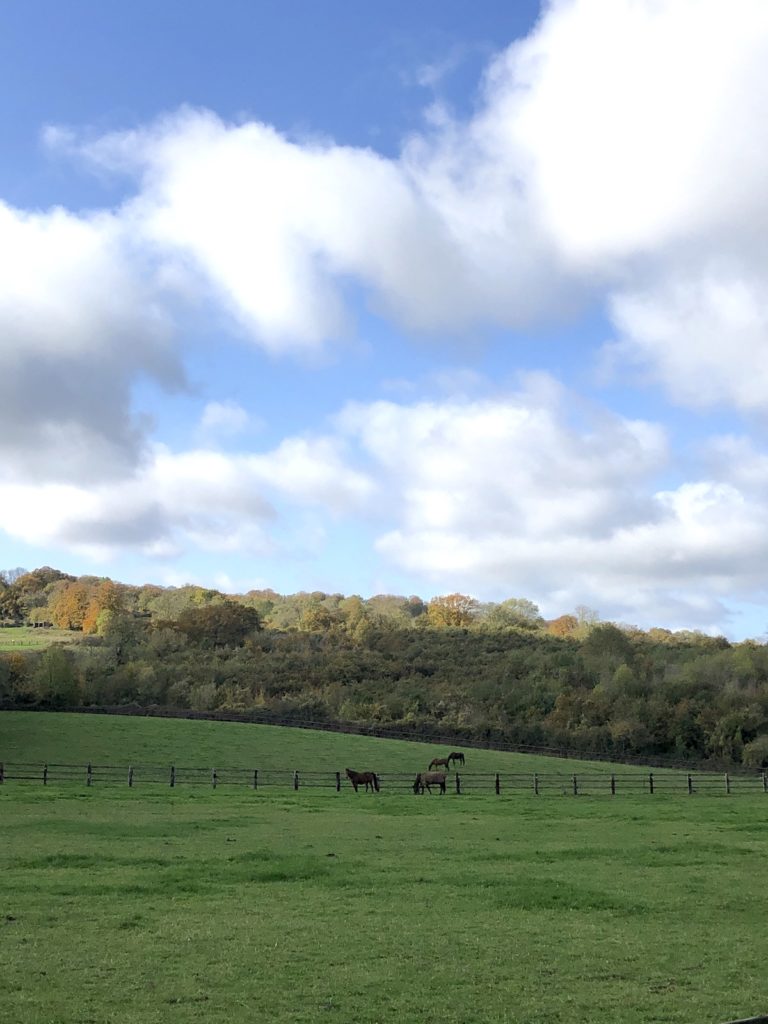
The first rule of hunting mushrooms in the French countryside? Don’t ask any of the other mushroom hunters where they hunt mushrooms. I’m joking of course, but sort-of not. Everyone has favorite spots they’ve discovered and it’s considered rude to ask.
But if they invite you to come along on the hunt? Then you’re good to go. Ben Blair and I were invited by our friends Mark and Richard and Dominique — and we jumped at the chance.
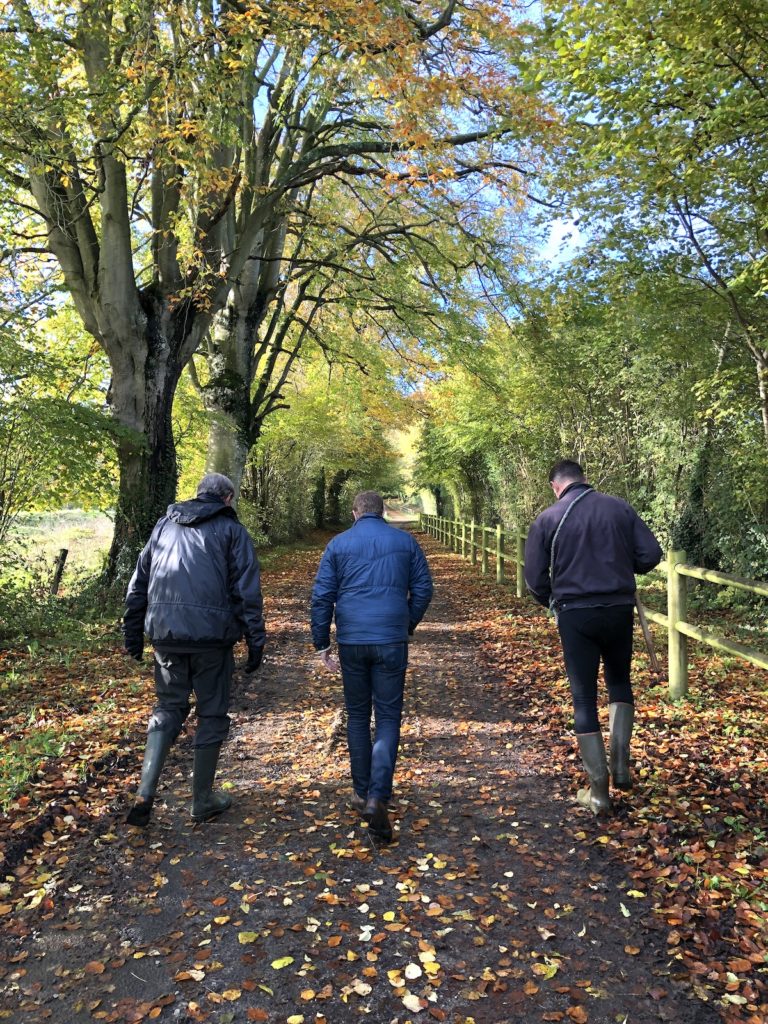
Right now, in our area, there’s a lot of talk about mushrooms. Everyone says this is the biggest mushroom season in living memory. We were told mushroom season typically ends in late September. But it’s been a strange year weather-wise — and here it is November and it’s still going strong. The mushrooms pop up so quickly, that the hunting season will keep going until the first freeze.
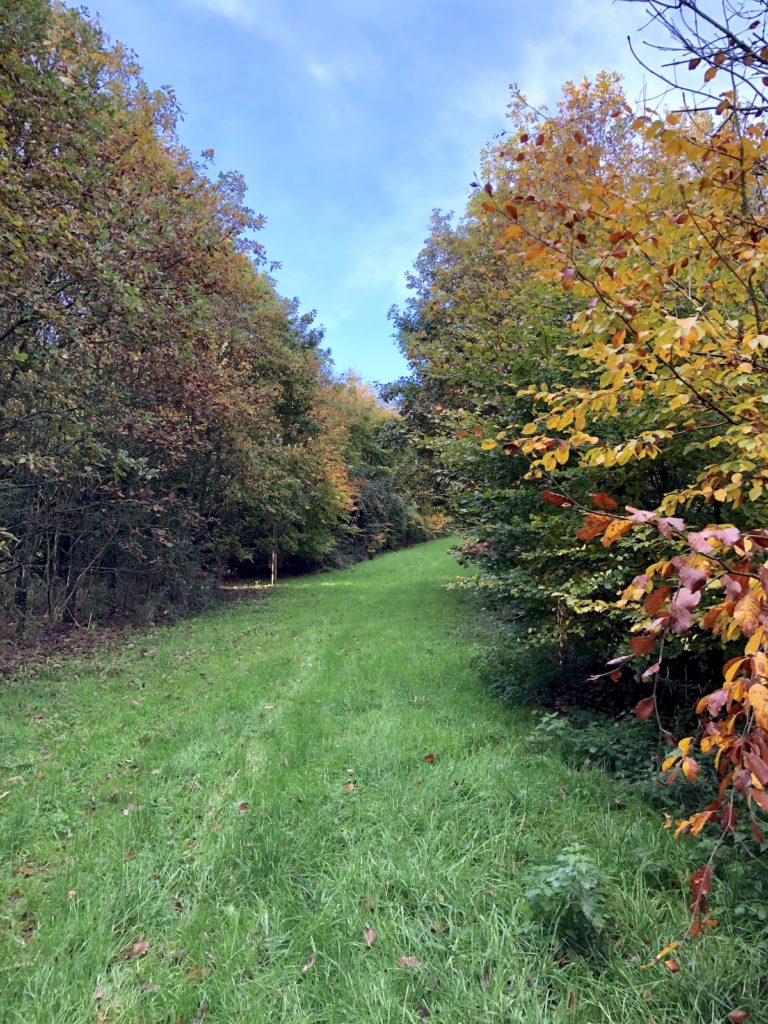
Side note: Coming from six years in Oakland, I’m actually looking forward to the winter. Then again, I still haven’t forgotten how harsh it can get here, so I’m trying to appreciate the gorgeous fall weather as long as it wants to stick around.
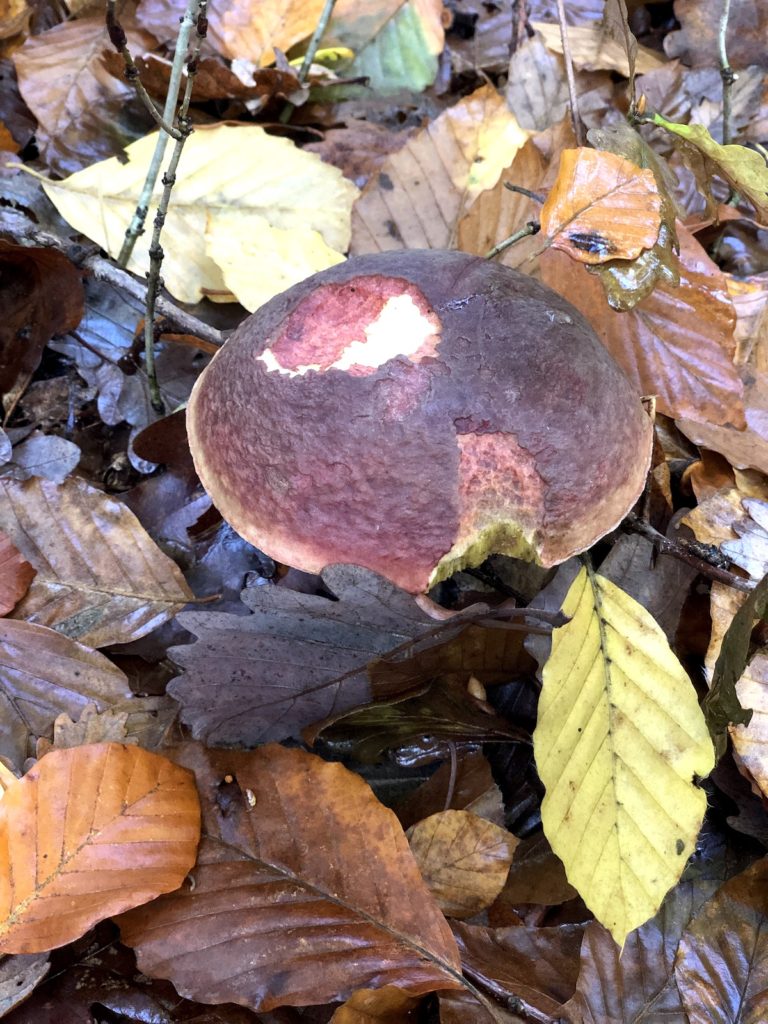
There are a ton of wild mushrooms in this area. A ton as in hundreds of varieties. Some are edible. At least one is deathly. And there are others that will give you bad indigestion. Cèpe mushrooms are the coveted ones, and happily they are everywhere this year. And cèpes are the only ones we hunted for — we passed a bunch of other ones, but paid them no attention.
In fact, to be safe Richard and Dominique only pick cèpes and leave the others alone (even if they’re likely edible) just to be safe. And Mark said his goal is to learn the 3 best and 3 worst varieties of mushroom here, and then he can ignore the rest.
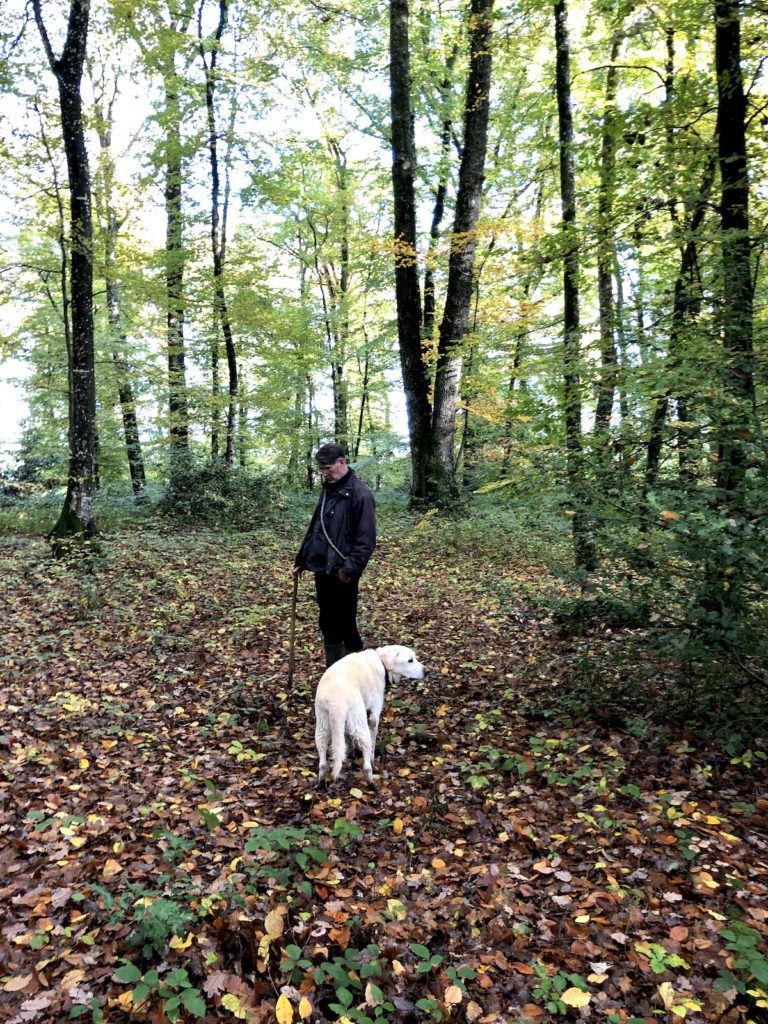
People here hunt for mushrooms on both public and private property, but mostly public. We were told you can’t hunt on public lands (they’re called forêt domaniale) on Tuesdays and Thursdays — so that the mushrooms don’t get over-picked.
It was really fun to learn how to recognize the cèpes. We were told it takes a sharp eye, and they weren’t joking about that. They totally blend in with all the fallen leaves on the forest floor. Can you spot them?

Something distinctive about the cèpes is that they look spongey underneath, instead of having the lined fringe. The thing that surprised me? The ones you really want are about five days old, and they’re HUGE. I was expecting to hunt those little white/grey button mushrooms you find at the grocery store but these were totally different.
Once you find a mushroom, you can use a special pocket knife to cut them at the base — level with the forest floor. But sometimes, even trying to prevent it from doing so, the whole root would come out.
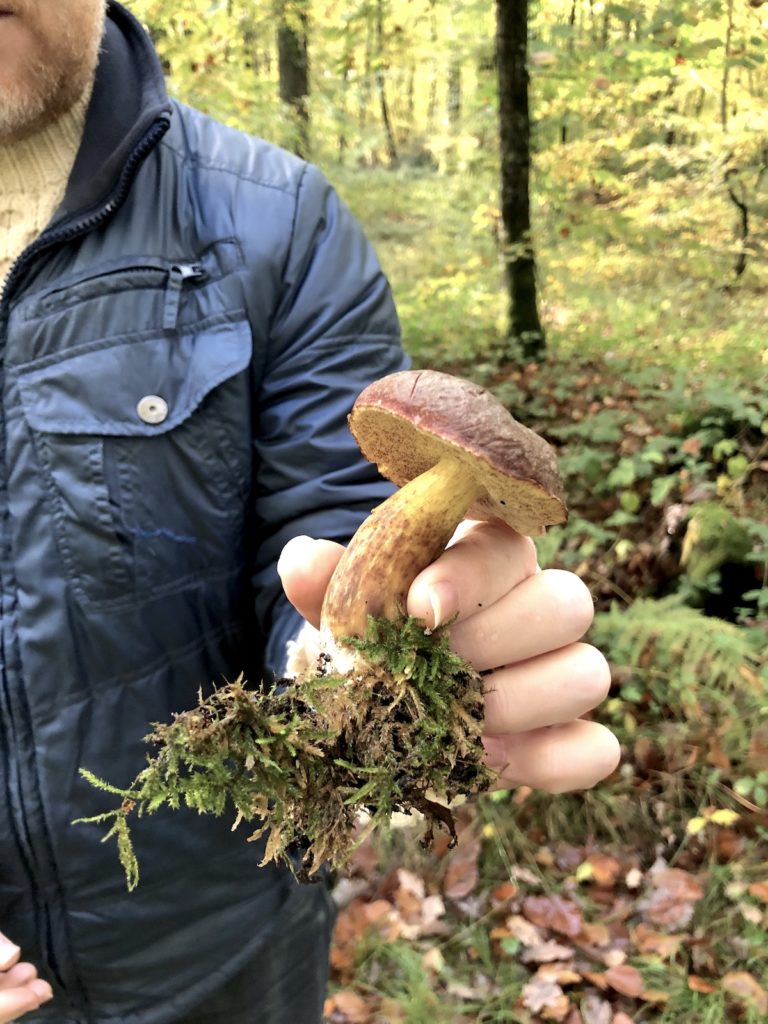
One of the things I found the most fascinating about the mushroom hunting culture here, is that once you’ve picked your mushrooms, you can go to any pharmacy, and the pharmacist will check them to make sure they’re not poisonous. It’s a complementary service and we’re told it’s just part of their job — in fact, mushroom identification is a course in pharmacy school.
Mark explained that two different times he’s taken a basket in to get checked and the pharmacist said he had to toss the whole batch out because there was one poisonous mushroom — and if the poison one had touched any of the others it could contaminate them as well. The pharmacist made Mark wash his hands immediately! I should note: mushroom safety is no joke here. Every year you read about accidental death from mushrooms in the papers.
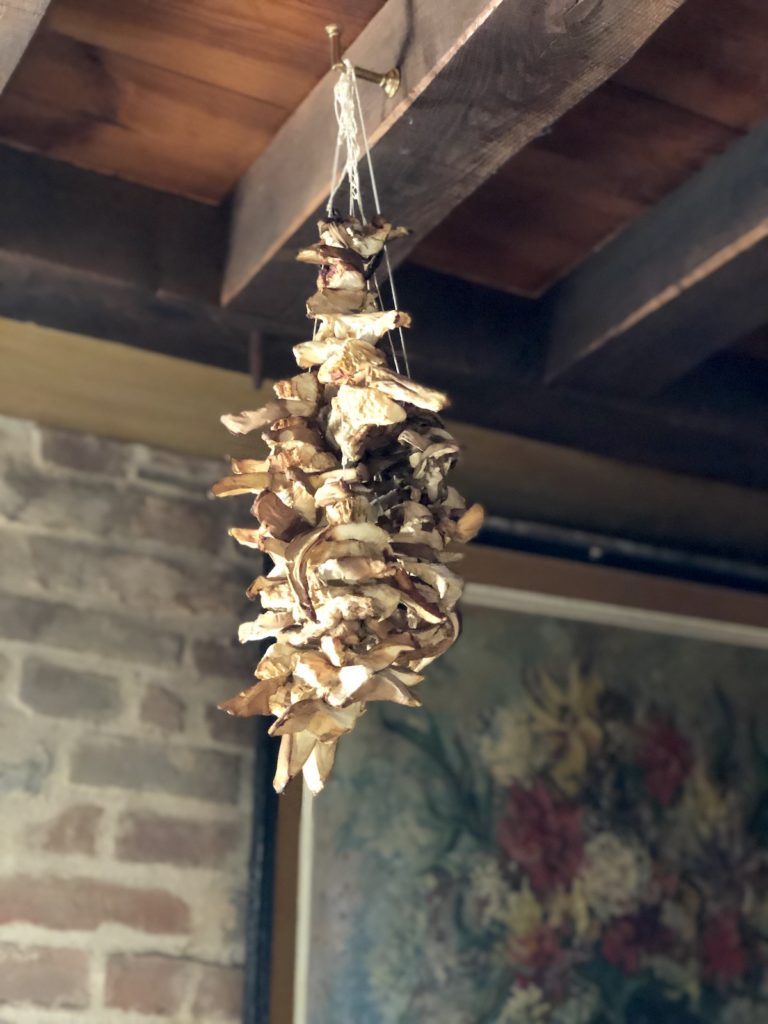
Once they’re collected, the cèpes needs to be cleaned and prepped. That includes washing them with water and a bit of vinegar. Then scraping off the inedible parts — sort of like the hair on an artichoke heart — and slicing them. Cleaning them is important because when you pick them, they typically have nibbles from bugs and woodland creatures.
Once they’re prepped, you can cook and eat them immediately, or preserve them. You can hang the slices to dry, then store them in a glass jar — they’ll last at least a year. Or you can cook them in butter, until they’re reduced with no liquid, then freeze them.

Ben and I both agreed that mushroom hunting seems like something our kids would love — and we remembered wanting to make an Olive Us episode about mushroom hunting when we lived here before. Maybe we’ll get a chance to take the kids out hunting this weekend.
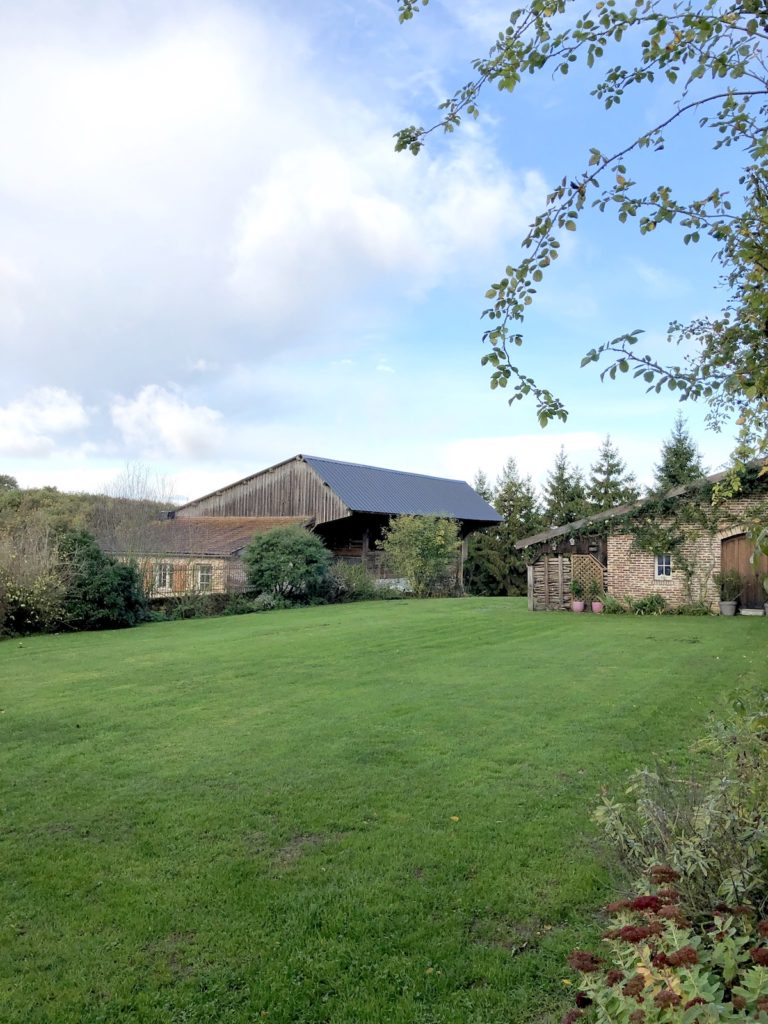
Your turn! Have you ever hunted for wild mushrooms? Can you confidently identify the edible ones? Or would you trust your pharmacist to spot the poison ones? : ) I’d love to hear.
P.S. — The countryside was so beautiful during our hunt that most of the photos I snapped ended up being landscape shots instead of mushroom-hunting shots. Hah! You can see more from our hunt on my Instagram stories.
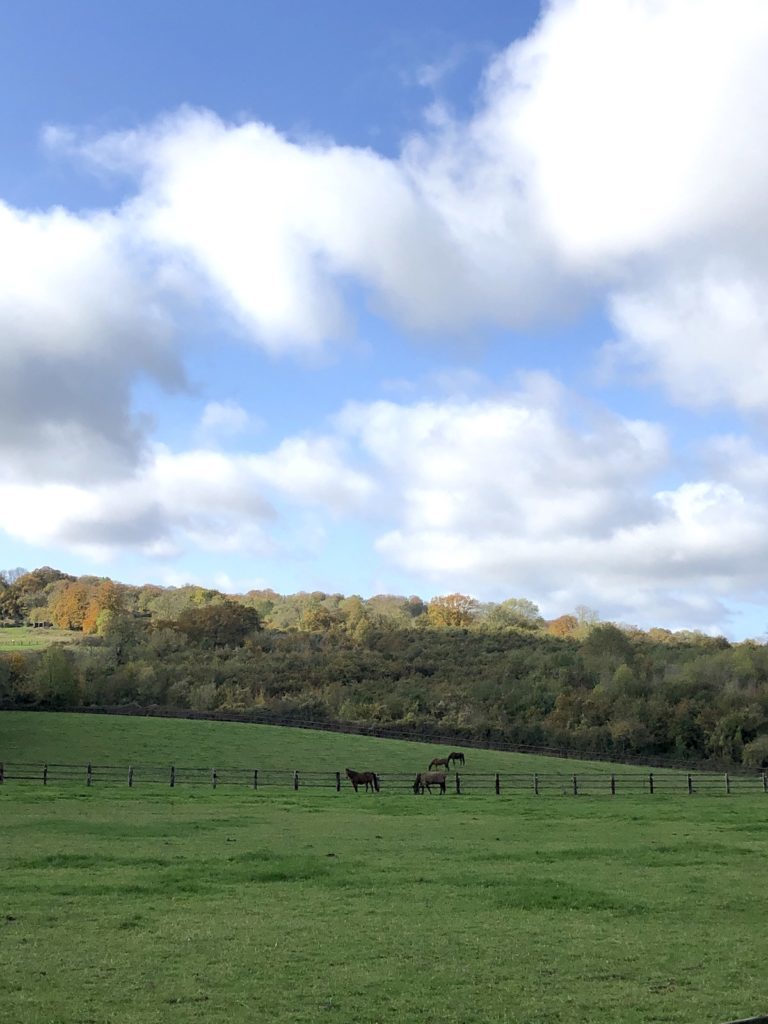
It’s part of the culture in Oregon as well. My insta feed has been full of Chanterelle hunting. I have never gone because of the worry about misidentification, but I must try! Also, your walk to school is so charming! Thanks for sharing!
I don’t trust myself enough to collect wild mushrooms. For me the stakes are too high, but…if I could take them to be verified as safe then new ball game and I would so be in!!!
Growing up, mushroom hunting was really a thing. Especially older people went to the woods and came back with baskets full of a variety of mushrooms in autumn (and wild blueberries in summer). I can savely identify porcini and chanterelle mushrooms. (Are these words recognizable to you? They are the best translation from the German words Steinpilze and Pfifferlinge I could find.)
Happy hunting!
Yes, porcini and chantarelle, yum yum!
Porcini = Steonpilz = cèpes jummy in every language
I wish I could take mushrooms to the pharmacy for identification!! That would be awesome! That’s not at thing here in CT, USA. I get so many mushrooms in my yard, and such a variety. Once a guy on a motorcycle knocked on my door and asked to pick some of the mushrooms in my yard. He runs a coffee shop in town. I’ve really really gotta figure out identification!
I have good friends who would go mushroom hunting in Michigan every year. They definitely are very cautious about which mushrooms to pick or not. The fact about taking mushrooms to a pharmacy is fascinating! I wonder if you took a basket of mushrooms to Walgreen’s or CVS, what the pharmacist would say. :)
Lovely!!! Im still looking for them cepes on Cape Cod..but no luck! Plenty of other boletes but i want the big guys! Wonderful hobby..tks! Marcie G.
Morels! I used to go morel hunting every year when I lived in the Upper Peninsula of Michigan. But I haven’t gone in years and wouldn’t trust myself anymore. No one else in my family will eat mushrooms, so the standard grocery store offerings serve my purposes. I have thought about growing my own…
Unfortunately, morels don’t grow in Normandy. But they are the most expensive, almost as expensive as truffles! So if you can find them, go for it!
Washington state morels are some of the best! We all love mushroom hunting–it’s just so thrilling when you find them!
my husband is an expert at identification; we pich chanterelles, cepes and trompettes des morts. So yummy! I love fried potatoes, cepes, garlic and parsley; the best!!
Here in Northern California death cap mushrooms live at the base of some oak trees. I’ve lost two dogs to death caps and the mere thought of wild mushroom hunting freaks me out. Sorry Gaby….but I am glad there are experts and it appears to be safe there where you are in France.
I just went to a garden club meeting with my neighbor, and I was by far the youngest one there! But I loved it and the topic was mushrooms! So interesting! I hope to go on a hunt with the mushroom club next spring.
My son and I used to hunt mushroom here in Missouri. We can confidently identify morels but definitely steered clear of anything iffy. Fortunately, there is a great mycological society here with members willing to help with identification.
Great post! I’m a professional mushroom hunter in NC and I’ve hunted with local friends in Tuscany and Umbria. I write about foraging for several magazines and teach classes as well–have learned my trade from foragers in 8 states and 6 countries. I’m on a national call list for people who want to find out if a mushroom is poisonous. Can positively say that the one pharmacist who insisted that your friend toss the whole basket of mushrooms because one was poisonous, was mistaken. There isn’t enough toxin in the spores to hurt anyone. (And if all the mushrooms were spongy under the cap–called boletes for those who speak Latin–then they weren’t fatal either FWIW. The only fatal mushrooms have gills under the caps.) It always pays to be safe with mushrooms and really, the common edibles in any region are not hard to learn. And interestingly, many if not most mushroom “poisonings” in US and Europe are actually from people mishandling edible mushrooms: either eating some raw that should be cooked, or eating some that sat in a hot car too long, so they got food poisoning same as if they had mishandled meat (mushrooms are more like animals then plants). Sorry to go on long–but you asked !! :-)
Mushroom hunting is something I really want to try but I have no knowledge about wild mushrooms. Nice to see that you had a great time.
Those are the same ones Mark used to hunt with his grandfather. He has such wonderful memories of those times. We still hunt them today. On Vancouver Island, we had a great place to find them, and we never saw anyone else there, even though it was right of the road. He would find 5 for every 1 I would find.
Hey Gaby,
I’m from the eastern part of Germany and, contrary to western Germany, mushroom hunting is very big here. It is family tradition that is passed from generation to generation.
This year we found so many mushrooms that I lost my appetite for them completely. But still I had to got out and hunt… it is like an addiction.
When we hiked in the western part of Germany, fellow hikers thought we were crazy for collecting mushrooms AND cooking them. We heard many teasings about seeing us in hospital. Strange that Germany is still divided at least mushroom wise.